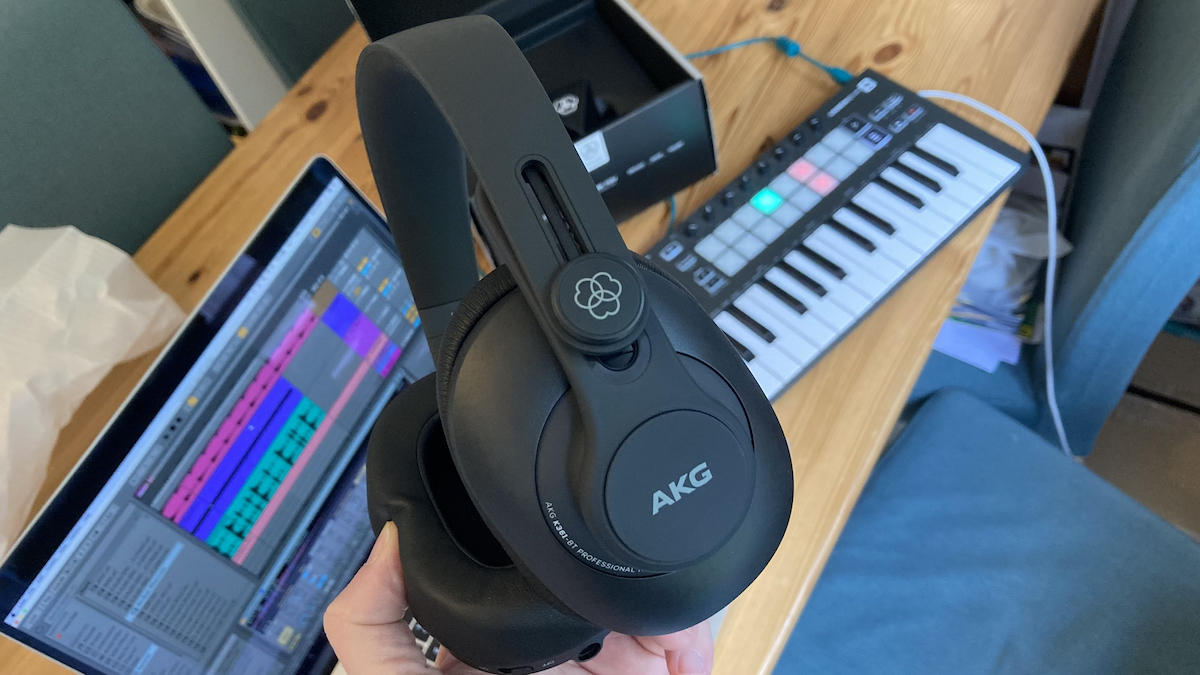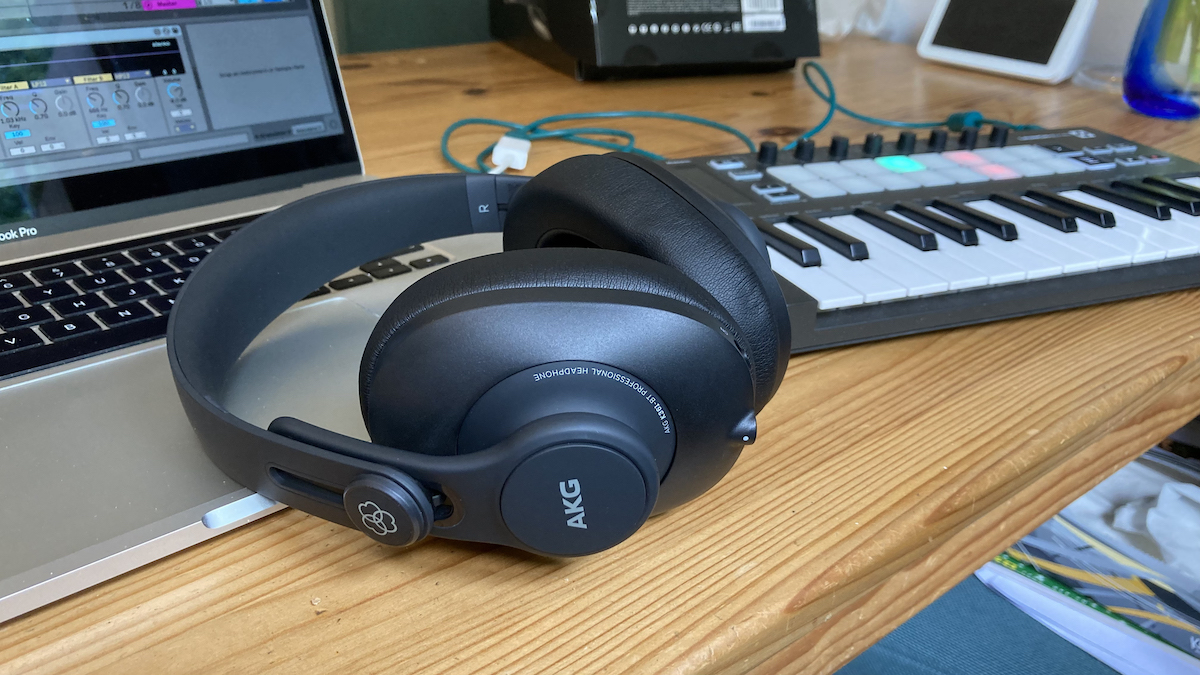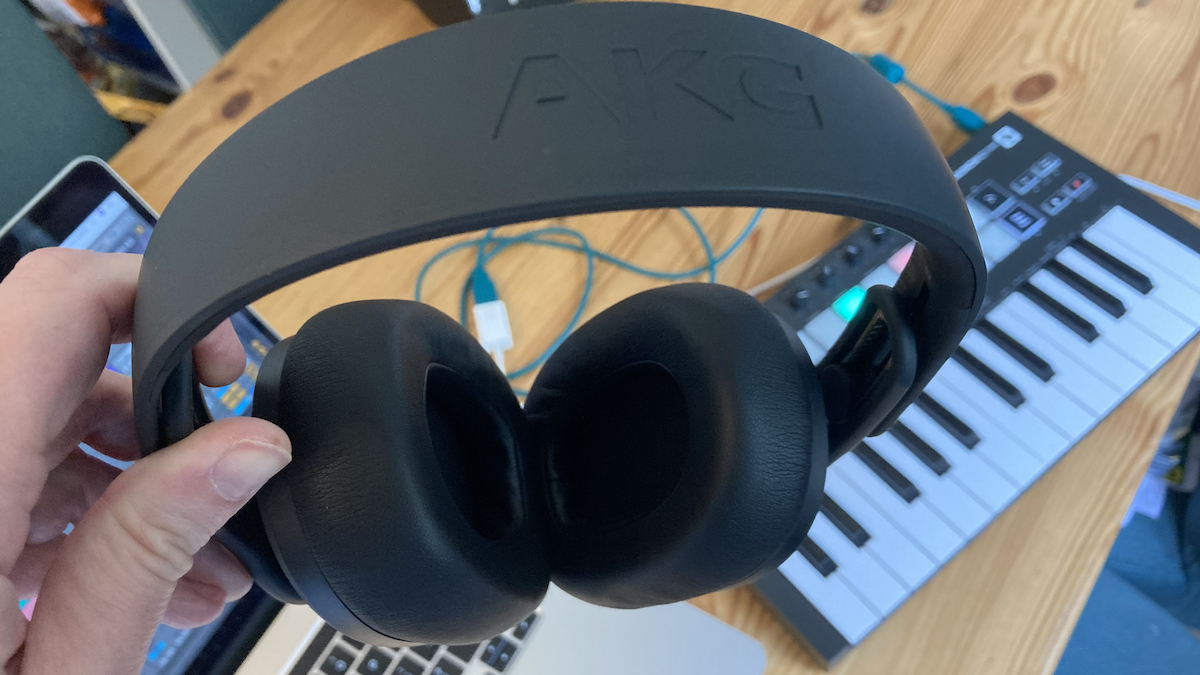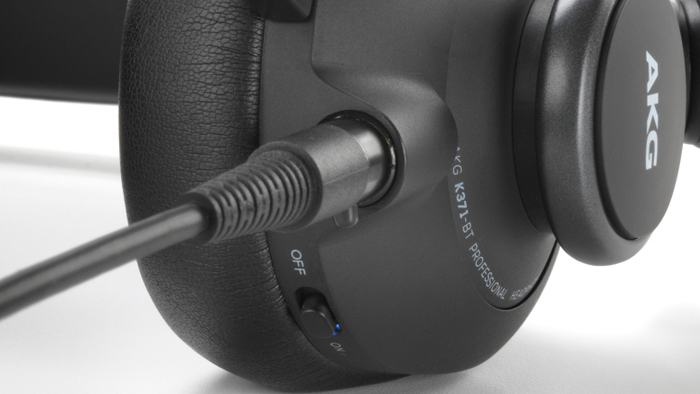MusicRadar Verdict
At this price point, the K361-BT makes for an intriguing wireless headphone, great for wireless gaming or listening to audiobooks while cleaning the house, and a decent choice for music production when plugged in using the supplied cable.
Pros
- +
Good value
- +
Great transmission range and battery life
- +
Touch controls work well
Cons
- -
Doesn’t support aptX codec
- -
Sounds better in cabled mode
MusicRadar's got your back
AKG K361-BT review: What is it?
Alongside Beyerdynamic and Sennheiser, AKG completes the triumvirate of top-line, professional headphone brands that have been ubiquitous in studios for decades. The K361-BT model is a Bluetooth-equipped version of AKG’s standard, cabled K361 closed-back studio headphone. It has a trick up its sleeve though, in the shape of two detachable cables also included in the package, but does its ability to be used either in cabled or wireless guises make the K361-BT the best of both worlds?
With a lightweight, understated design, and squishy ear pads that make these a comfy bet for long listening sessions, everything is matt black with only the slightest light grey-coloured accent present in the AKG logo on the sides. There’s a large embossed company logo on the headband to aid with orientation and the ear cups seem just a little bit thicker than those on the standard version, presumably to accommodate the battery and the extra Bluetooth gubbins.
The ear cups swivel vertically up into the headband void for travel, making these a relatively portable option that took up residence in our laptop bag without a hitch, with the option to transport them sans cable making things even easier. As a bonus, the swivel mechanism also makes it easy to slip one can off for DJ headphone duties if that’s your thing.
The straight 1.2m and 3m interchangeable cables connect to the underside of the left ear cup with a secure, twist-lock fitting. In the box, you also get a USB charging cable, a screw-on 6.3mm-3.5mm stereo adapter and a high-quality, blue-grey material drawstring pouch, stamped with a black AKG logo, to keep everything in.
AKG K361-BT review: performance & verdict




Speaking the (Blue) Tooth
The K361-BT is a breeze to set up and use, working flawlessly straight out of the box. The on/off switch was easy to find, Bluetooth pairing to our test computer was intuitive and simply achieved, and in seconds we were listening to some tunes courtesy of Apple Music. We liked the fact that they had plenty of charge in them right from the get-go, so we didn’t have to spend any time charging before we could try them out, and in fact the battery continued to soldier on for several hours of subsequent testing.
The transmission range seems decent - whilst listening, we left the computer playing and wandered through the next room into the hallway and up some stairs with no dropouts or degradation whatsoever. There’s a useful array of built-in touch controls on the side of the left ear cup - double tap to start and stop playback of whatever you’re listening to, swipe up and down to adjust volume and forward and back to skip between tracks. These work pretty well once you’ve memorised which action performs which function. There’s also a built-in microphone for the benefit of Zoom callers and online gamers.
If you’ve not tried Bluetooth headphones before, the sheer convenience is hard to deny. Being untethered by a cable makes it easy to stand up and cross the room to fetch something without having to divest yourself of your cans first. The trade-off for this though is a noticeable difference in sound quality compared to when using them with a wired connection - but why should this be?
Want all the hottest music and gear news, reviews, deals, features and more, direct to your inbox? Sign up here.
Codec blue

In order for audio data to be transmitted over the airwaves it has to be compressed using a codec, which determines how Bluetooth transmits audio from the source device to your headphones. There are several standards of codec knocking about, all of varying bitrates, with higher bitrate codecs generally resulting in better sound quality. If you’re going to go the wireless route with your cans, it makes sense to invest in headphones that support a high bitrate codec like AAC, Sony’s LDAC, or Qualcomm’s aptX.
The K361-BT only supports two Bluetooth codecs - AAC and SBC. AAC is the licence-free standard for YouTube and Apple devices, but it doesn’t perform particularly well on Android devices and isn’t supported by Windows at all. This leaves SBC - the ‘lowest-common denominator’ codec used as the baseline standard for all Bluetooth devices - as the only option for Windows users. Why the more universally-supported, higher quality aptX codec is not included as an option seems strange to us.

Audio-Technica ATH-M50xBT
Brilliant all-rounder studio reference headphone with a gentle but satisfying bass boost and added Bluetooth features.
AKG K361
Cabled version is less costly and is a better bet for music production.
In our tests, it turned out that our 2019 Apple MacBook Pro communicated just fine with the K361-BT over AAC, although with a noticeable deficit in quality when compared with the sound achieved when used with one of the supplied cables. In wireless mode, the sound had a one-dimensional feel to our ears, not particularly forward-sounding, with a frequency response that was seemingly quite flat with a bit of a bump in the mids. Initial impressions were of a good stereo image but not too much high-end detail, with a bottom end that’s decent and not overdone. The impedance on these is only 38 ohms, but unusually for a low-impedance design they seem to respond better when driven quite hard.
The Achilles heel of any Bluetooth headphone is latency - the delay introduced when the audio is converted by the codec into a transmissible format and broadcast over the air to your cans. This usually makes Bluetooth cans unsuitable for monitoring when programming and recording in real-time with a DAW, and in our tests the K361-BT proved to be no exception, with a substantial delay between playing a note on our (wired) MIDI keyboard and the sound appearing in the cans.
Cabled capabilities

Plug one of the supplied locking cables into the socket on the underside of the left earpiece though, and not only does latency cease to be an issue, but the sound quality improves considerably as well. No longer needing to be compressed by the Bluetooth codec, the bass region becomes much warmer and punchier, with a much more forward sound in general and an increased degree of high end clarity. However, when in cabled mode, Bluetooth features are effectively disabled, so this does mean that you lose the touch transport controls on the side of the left ear.
When cabled, the K361’s overall sound signature is tuned to the Harman curve, a response that’s theoretically the most pleasing to the majority of listeners, which makes sense because AKG are owned by Harman Audio. This still sounded a little harsh to our ears at times, with what seemed to be a pronounced bump around the 1-2kHz region, making these quite fatiguing to listen to for long periods at a moderate volume.
AKG K361-BT review: Verdict
At this price point, the K361-BT makes for an intriguing wireless headphone, great for wireless gaming or listening to audiobooks while cleaning the house, but like most Bluetooth cans not our first choice for music consumption or production. The draw of wireless listening is a big plus if you’re prepared to overlook the compromise in sound quality. So if you’re not overly bothered about the non-audiophile quality of its supported Bluetooth codecs and more concerned with convenience, these could be a great buy for you. However, if you’re all about the sound or looking for a pair of cans to use for music production, we reckon you might be better off considering a regular, cabled pair. If you’re a big fan of the AKG sound, you might consider the non-Bluetooth version, the K361.
AKG K361-BT review: Specification
- Operating Principle: Closed, dynamic transducer
- Frequency response: 5Hz - 28kHz
- Impedance: 32Ω
- Weight: 215g (without cable)
- Cable: Straight 3m, straight 1.2m detachable
- Ear pads: Black vinyl
- Contact: AKG
Dave has been making music with computers since 1988 and his engineering, programming and keyboard-playing has featured on recordings by artists including George Michael, Kylie and Gary Barlow. A music technology writer since 2007, he’s Computer Music’s long-serving songwriting and music theory columnist, iCreate magazine’s resident Logic Pro expert and a regular contributor to MusicRadar and Attack Magazine. He also lectures on synthesis at Leeds Conservatoire of Music and is the author of Avid Pro Tools Basics.
